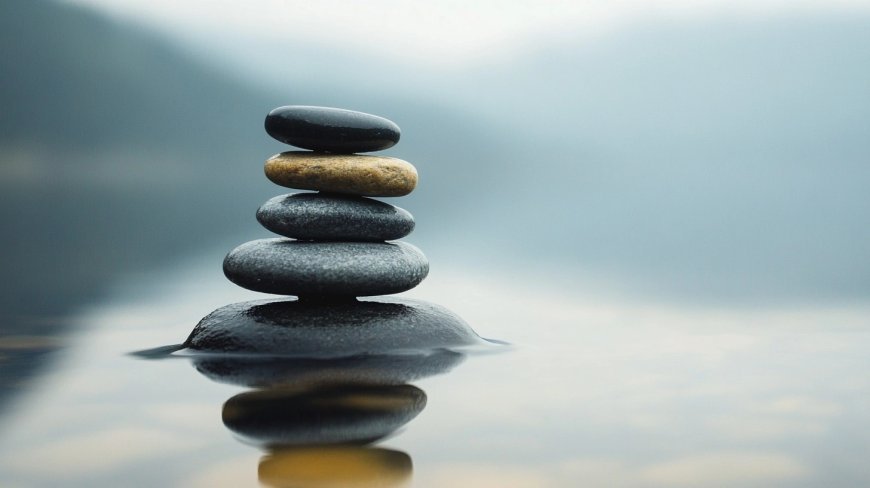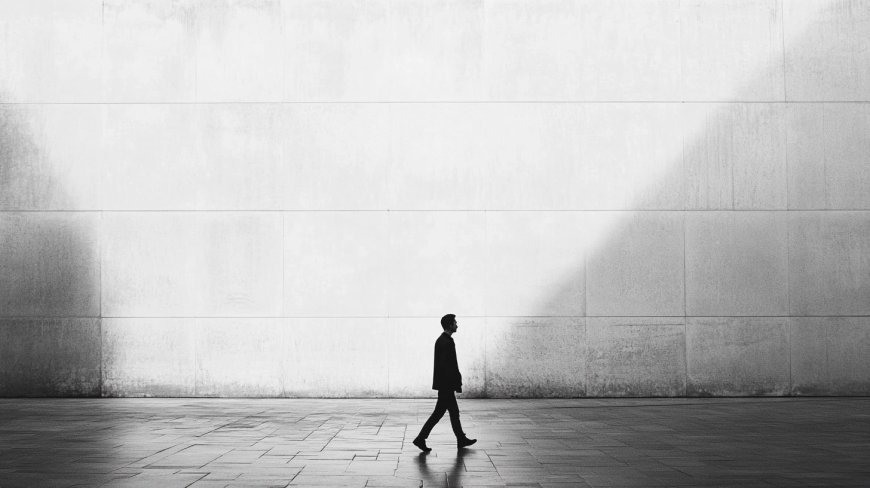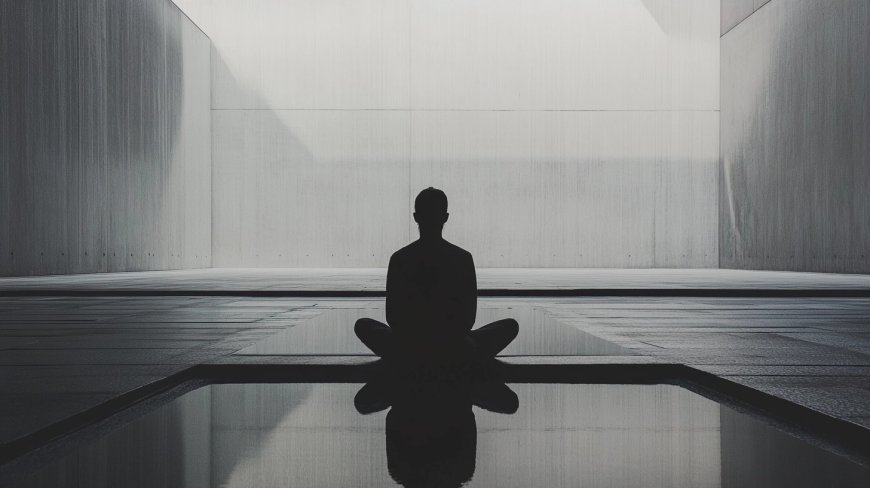Minimalism: The Benefits of Simplifying Your Life and How to Start

In a world where we’re constantly bombarded with advertisements and encouraged to consume, the concept of minimalism offers a refreshing perspective: living with less to make more room for what truly matters. Minimalism is about removing the excess to create a life of greater purpose, clarity, and freedom. By simplifying our physical spaces, commitments, and even thoughts, we can gain more time, energy, and contentment.
In this article, we’ll explore the benefits of minimalism, practical tips for decluttering, and how adopting a minimalist lifestyle can lead to a more fulfilling existence.
1. What is Minimalism?
Minimalism is a lifestyle philosophy that emphasizes living with intention and eliminating the unnecessary. It encourages focusing on the essentials—what adds genuine value to your life—and letting go of the excess that contributes to stress and distraction.
- Not Just About Stuff: While many people associate minimalism with decluttering physical belongings, it also applies to mental clutter, social commitments, and how we use our time.
- Mindful Living: Minimalism is about consciously choosing what to keep and what to let go of, fostering a sense of freedom from consumer culture and the constant pursuit of more.

2. The Benefits of Simplifying Your Life
Adopting minimalism can lead to numerous positive changes that improve your quality of life in various ways.
A. Reduced Stress and Anxiety
One of the most immediate benefits of minimalism is reduced stress. The less physical and mental clutter you have, the fewer things there are to distract or overwhelm you.
- A Calmer Environment: Decluttering your home creates an open, organized space that feels peaceful rather than chaotic. When your surroundings are clear, your mind tends to feel less stressed.
- Less Decision Fatigue: By reducing the number of items you own, you minimize the small decisions you have to make daily, such as choosing an outfit or finding household items. This leads to less decision fatigue and more mental energy for what truly matters.
B. Increased Focus and Productivity
Minimalism helps eliminate distractions, which in turn allows you to focus more effectively on your goals.
- A Focused Environment: With fewer objects around to distract you, it’s easier to maintain concentration. A clutter-free workspace fosters productivity, which is particularly important for people who work from home.
- More Time for Priorities: When you’re not spending hours cleaning, organizing, or shopping for new things, you have more time to invest in hobbies, relationships, and personal development.
C. Financial Freedom
Living minimally can lead to significant savings and financial freedom by encouraging mindful consumption.
- Spending Less: When you stop buying unnecessary items, you save money. A minimalist approach to shopping means focusing only on what you truly need, which leads to fewer impulsive purchases.
- Value-Based Spending: Minimalism also shifts your mindset toward spending on experiences and things that genuinely add value, rather than accumulating goods. This can enhance your quality of life without cluttering your home.
D. Improved Mental Health
Decluttering your environment can have profound effects on your mental health, allowing you to feel less overwhelmed and more content.
- Letting Go of the Past: Getting rid of items tied to negative memories can be incredibly liberating. Letting go of physical items that no longer serve you can help release emotional baggage.
- Enhanced Emotional Well-Being: Creating a minimalist space fosters a sense of calm, order, and control, which helps reduce anxiety and improve overall emotional well-being.
E. More Freedom and Flexibility
Minimalism provides greater freedom, both physically and mentally.
- Easier Mobility: If you own fewer possessions, moving to a new place or traveling becomes significantly easier. This allows you to be more adaptable and flexible in your life choices.
- Mental Clarity: Simplifying your life encourages a clearer mind, enabling you to focus on personal growth, creativity, and the pursuit of passions without distractions.
3. Practical Tips for Decluttering Your Life
Starting the minimalist journey can be daunting, especially if you’re used to a lifestyle of excess. The key is to start small and stay consistent. Here are some practical tips to help you declutter your life:
A. Decluttering Your Physical Space
-
The One-Year Rule
- Go through each item in your home and ask yourself: Have I used this in the past year? If the answer is no, it’s likely time to let it go. This rule is particularly useful for clothes, kitchen gadgets, and miscellaneous household items.
-
Room-by-Room Approach
- Decluttering can feel overwhelming if you try to do everything at once. Instead, go room by room, focusing on one space at a time. Start with easier areas like the bathroom or pantry, then move on to more challenging spaces like the garage or closet.
-
Create Keep, Donate, and Discard Piles
- As you declutter, separate your items into three categories: Keep, Donate, and Discard. Be honest about each item’s value and let go of things that no longer serve a purpose.

-
The KonMari Method
- The KonMari Method by Marie Kondo encourages you to hold each item and ask yourself if it “sparks joy.” If it doesn’t, thank the item for its service and let it go. This approach helps you keep only what truly adds value to your life.
B. Decluttering Your Digital Life
Minimalism doesn’t only apply to your physical space; your digital world can be a significant source of stress.
-
Unsubscribe from Unnecessary Emails
- Declutter your email inbox by unsubscribing from newsletters and promotions you no longer read. This reduces distractions and helps you focus only on the most important communications.
-
Delete Unused Apps
- Go through your phone or tablet and delete unused apps. Too many apps can lead to clutter and increased screen time, contributing to stress.
-
Organize Your Files
- Spend time organizing your digital files into folders. Delete duplicates, remove unneeded files, and create a logical structure that’s easy to navigate.
C. Decluttering Your Schedule
-
Learn to Say No
- Overcommitting yourself can lead to burnout. Learning to say no to activities or obligations that don’t align with your values or goals is crucial in creating a more focused and intentional schedule.
-
Identify Time-Wasters
- Identify activities that waste your time and provide little value, such as excessive scrolling through social media or watching hours of television. Reduce or eliminate these activities to make room for more meaningful pursuits.
-
Prioritize Activities that Matter
- Focus on activities that contribute to your well-being, such as exercising, spending time with loved ones, or pursuing a hobby. Prioritizing these activities will help you feel more fulfilled and less overwhelmed.
4. How to Start Your Minimalist Journey
If you’re ready to embrace minimalism, it’s important to start with clear intentions. Here’s how you can begin simplifying your life.
A. Define Your “Why”
-
Identify Your Motivation
- Before you begin, determine why you want to embrace minimalism. Whether it’s to reduce stress, gain financial freedom, or improve your overall well-being, understanding your motivation will keep you focused and committed.
-
Set Clear Goals
- Set specific, achievable goals for your minimalist journey. For example, decide to declutter one room each week or reduce your wardrobe by 50%. Clear goals will help you stay on track and celebrate small victories along the way.

B. Start Small and Be Consistent
-
Tackle One Area at a Time
- Start small by decluttering a drawer, a shelf, or a specific area in your home. These small wins will build momentum and make it easier to continue.
-
Declutter for 10 Minutes a Day
- If you’re short on time, commit to decluttering for just 10 minutes a day. Small, consistent actions add up over time and help you make steady progress.
C. Adopt a Minimalist Mindset
-
Focus on Quality Over Quantity
- Minimalism doesn’t mean living without nice things; it means investing in high-quality items that add value to your life and are built to last. This mindset can lead to less waste and more satisfaction with your belongings.
-
Be Mindful of New Purchases
- Before buying something new, ask yourself if you truly need it and whether it aligns with your goals. Practicing mindful consumption can prevent future clutter and help you stay committed to minimalism.
D. Embrace Non-Physical Minimalism
-
Limit Mental Clutter
- Simplify your mental space by practicing mindfulness and letting go of worries about things you can’t control. Meditation and journaling are great tools for decluttering your mind and enhancing mental clarity.
-
Declutter Relationships
- Evaluate the relationships in your life. Are there connections that bring negativity or drain your energy? Minimalism can extend to your social circle, encouraging you to focus on meaningful relationships that uplift and support you.
5. Challenges You May Face and How to Overcome Them
Transitioning to a minimalist lifestyle isn’t always easy, and there may be challenges along the way. Here’s how to handle some common obstacles:
A. Emotional Attachment to Items
Letting go of items with sentimental value can be difficult. To make it easier, try taking a photo of the item before discarding or donating it. This allows you to keep the memory without keeping the physical item.
B. Fear of Needing Things in the Future
The fear of needing something after you’ve let it go can hold you back from decluttering. To overcome this, consider the “just in case” box strategy—put items you’re unsure about in a box, and if you don’t use them in six months, let them go.
C. Pressure from Consumer Culture
Consumer culture can make you feel pressured to buy and accumulate. Remind yourself of your “why” and focus on the freedom and clarity minimalism provides. Resist impulse purchases by implementing a 24-hour rule: wait 24 hours before buying something to see if you really need it.
6. Conclusion: Embrace the Freedom of Minimalism
Minimalism is a journey of simplifying your life to make room for what truly matters. By reducing the physical, digital, and mental clutter, you gain more time, energy, and freedom to focus on the things that add value—your passions, relationships, and personal growth.
The benefits of minimalism go beyond just having a tidy home; it’s about cultivating a life of intention, where each choice aligns with your values and aspirations. Remember, there is no right or wrong way to be a minimalist—the key is to find what works for you and start taking small, consistent steps toward a simpler, more meaningful life.
Embrace minimalism, let go of the excess, and experience the profound impact it can have on your happiness and well-being.

7. How Minimalism Positively Impacts Relationships
Minimalism not only affects your physical and mental well-being but also has a significant impact on your relationships. By simplifying your life, you can create deeper connections and foster healthier relationships with those around you.
A. More Quality Time with Loved Ones
-
Less Focus on Material Goods:
- By removing the distraction of material possessions, you create more time and space to dedicate to relationships. Without the constant need to buy, organize, or maintain things, you can spend more time engaging in meaningful activities with family and friends.
-
Intentional Interaction:
- Minimalism encourages intentional living, which can extend to how you interact with others. Instead of just going through the motions, you become more present, listen better, and form deeper connections.
B. Setting Boundaries
-
Protecting Your Energy:
- Minimalism also means cutting down on toxic relationships or social obligations that drain your energy. You learn to set healthy boundaries and prioritize relationships that are mutually uplifting and supportive.
-
Saying No When Necessary:
- Many of us feel compelled to say "yes" to every social invitation or favor requested of us, but this can lead to burnout. Minimalism teaches you to value your time and energy, allowing you to say "no" without guilt and only commit to things that align with your values.
C. Improved Communication
-
Being Fully Present:
- By decluttering your mind from unnecessary worries and your schedule from overwhelming commitments, you become more present in conversations. This presence allows for better communication and fosters stronger, more authentic relationships.
-
Removing Emotional Baggage:
- Letting go of physical items that carry emotional weight can help you process and move beyond past experiences, which can positively affect how you engage with loved ones. You become more open, less defensive, and more capable of building healthy connections.
8. Minimalism and Environmental Benefits
Minimalism isn’t just beneficial for individuals—it also has a positive impact on the environment. By consuming less, you’re contributing to a more sustainable way of living.
A. Reducing Waste
-
Less Packaging:
- Minimalists buy fewer items, which means less packaging waste. By adopting a minimalist lifestyle, you automatically reduce the amount of plastic, cardboard, and other packaging materials that end up in landfills.
-
Quality Over Quantity:
- When you focus on buying high-quality items that are built to last, you reduce the frequency of replacement purchases. This approach minimizes the amount of waste produced and conserves natural resources.
B. Supporting Sustainable Practices
-
Mindful Shopping:
- Minimalism encourages mindful consumption, which often translates to choosing eco-friendly and sustainable products. You become more aware of the impact of your purchases and are more likely to support brands that prioritize ethical production.

-
Decluttering Responsibly:
- When decluttering, minimalists often opt to donate or repurpose items instead of discarding them. This practice helps keep usable goods in circulation and prevents unnecessary waste.
C. Lower Carbon Footprint
-
Buying Less:
- By buying less, you decrease the demand for mass production, which is often linked to pollution and carbon emissions. Every item you don’t buy means fewer resources are used and less energy is spent on production and transportation.
-
Energy-Efficient Living:
- Minimalists tend to prefer smaller living spaces, which often require less energy to heat, cool, and maintain. This smaller footprint contributes to a reduction in overall energy consumption and greenhouse gas emissions.
9. Maintaining Minimalism Over the Long Term
Minimalism is not a one-time project; it’s a lifestyle that requires ongoing maintenance and a mindset of continuous improvement. Here are ways to sustain minimalism in the long run.
A. Regular Decluttering Sessions
-
Seasonal Decluttering:
- Every few months, dedicate time to re-evaluating your possessions and letting go of anything that no longer serves a purpose. This helps prevent clutter from building up and keeps your space organized.
-
The One-In, One-Out Rule:
- For every new item you bring into your home, let go of an existing one. This simple rule helps ensure that your belongings remain manageable and that you don’t accumulate excess.
B. Avoiding the Pitfalls of Consumer Culture
-
Unsubscribe from Promotions:
- Marketing and promotions are designed to make you want more. To resist these temptations, unsubscribe from promotional emails and avoid browsing online stores without a purpose. Focus instead on using what you already have.
-
Shift Your Mindset from Ownership to Experience:
- Minimalism encourages valuing experiences over possessions. Instead of spending money on material goods, invest in experiences like travel, learning a new skill, or spending time with loved ones.
C. Embrace Gratitude
-
Daily Gratitude Practice:
- Spend a few moments each day reflecting on what you’re grateful for. Cultivating gratitude helps you appreciate the things you already have and reduces the desire for more.
-
Contentment Over Comparison:
- Comparing yourself to others can lead to the feeling that you need more to be happy. Minimalism shifts the focus from comparison to contentment, allowing you to find joy in the present moment and your current possessions.
10. Real-Life Examples of Minimalism in Action
Hearing about real-life minimalists can inspire you to take action and see the practical ways in which minimalism can transform life. Here are some notable examples of people who have embraced minimalism:
A. Marie Kondo - The KonMari Method
Marie Kondo, author of “The Life-Changing Magic of Tidying Up,” emphasizes the importance of keeping only those items that spark joy. Her approach is rooted in gratitude and intentional living, encouraging individuals to create homes filled with purpose.
- Impact: By helping people identify what genuinely brings them joy, Marie Kondo’s method has inspired millions to let go of unnecessary items and create more organized and peaceful living environments.
B. Joshua Fields Millburn & Ryan Nicodemus - The Minimalists
Joshua and Ryan, known as The Minimalists, advocate for living a meaningful life with less. They encourage people to focus on relationships, health, and growth rather than accumulating possessions.
- Impact: Through their books, podcasts, and documentaries, The Minimalists have demonstrated how letting go of excess leads to more freedom, happiness, and connection.

C. Courtney Carver - Project 333
Courtney Carver’s Project 333 is a minimalist fashion challenge that encourages people to dress with only 33 items (including clothing, shoes, and accessories) for three months. This approach helps individuals realize that they don’t need a large wardrobe to feel stylish and confident.
- Impact: Project 333 has shown people that simplicity in clothing can reduce decision fatigue, save money, and help them feel more confident with fewer, higher-quality items.
11. How Minimalism Can Influence Other Areas of Life
Minimalism isn’t limited to your home or possessions—it can be applied to all areas of your life, including your career, relationships, and hobbies.
A. Minimalism at Work
- Streamline Your Workflow:
- Apply minimalism to your work by simplifying your workflow and eliminating unnecessary tasks. Focus on what drives results and reduces wasted time.
- Declutter Your Workspace:
- A minimalist workspace reduces distractions and creates an environment conducive to focus and productivity. Only keep items on your desk that you use daily.
B. Minimalist Diet and Health
-
Simplify Your Diet:
- A minimalist approach to eating involves focusing on whole foods and reducing the complexity of your meals. Instead of elaborate dishes, aim for simple, healthy recipes that nourish your body.
-
Exercise with Intention:
- Choose physical activities that you genuinely enjoy, and focus on consistency rather than overcomplicating your fitness routine with multiple programs. Activities like walking, yoga, or bodyweight exercises are simple yet effective.
C. Minimalist Entertainment and Hobbies
-
Quality Over Quantity:
- Rather than pursuing multiple hobbies that demand lots of time, materials, and equipment, focus on one or two hobbies that bring you joy and fulfillment. This prevents burnout and allows you to develop deeper skills.
-
Limit Screen Time:
- Minimalism encourages cutting back on mindless entertainment, such as excessive television or social media scrolling. Instead, engage in meaningful activities like reading, art, or spending time with friends.

12. Conclusion: A Journey Towards Intentional Living
Embracing minimalism is a journey that encourages you to simplify your life and focus on what truly matters. It’s not just about getting rid of stuff—it’s about creating a life of intention, where each choice is made to improve your overall well-being.
By removing the physical, mental, and emotional clutter, you make room for joy, peace, and growth. Whether it’s decluttering your home, simplifying your schedule, or focusing on meaningful relationships, minimalism can lead to profound changes that enhance your quality of life.
Remember, there’s no right or wrong way to be a minimalist. Start small, take consistent steps, and allow minimalism to transform your life in a way that aligns with your personal goals. Let go of the excess, embrace simplicity, and discover the freedom, clarity, and joy that come with a minimalist lifestyle.

 Martin Joseph
Martin Joseph 





